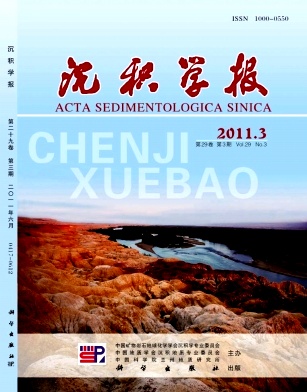Flood Sediments in Floodplain and Flood Events of Jingyang Reach in Jing River
- Received Date: 1900-01-01
- Rev Recd Date: 1900-01-01
- Publish Date: 2011-06-10
-
Key words:
- sediments in floodplain
Abstract: According to the field observation, the grain size, the element and compound analysis of 128 samples, and historical flood records of this area, we studied flood variation indicated by sediments in floodplain of the Jing River in Jingyang reach during deposit of floodplain. The result shows that the sediments which developed well on floodplain of the Jing River in Jingyang reach are mainly of coarse silt and very fine sand. Each component changes obviously in the entire profile, which can clearly reflect the variations of flood and precipitation with high resolving power. The profile is divided into 18 sediment stages, indicating 18 floods of different scales and 18 years with much precipitation. The order of depth and scale of floods of JYa from big to small is 14th, 12th, 13th, 8th, 5th, 1st, 2nd, 4th, 9th, 3rd, 7th, 6th, 11th, 10th, 18th, 15th, 16th, 17th. The flood depth of 1st is about 4.56 m, of which discharge is 4 010 m3/s. The flood depth of 14th, 12th, 13th, 8th, 5th are more than 4.56 m, of which discharge are more than 4 010 m3/s. The other flood depth are equal to or less than 4.56 m, of which discharge are equal to or less than 4 010 m3/s. The 14th flood sediment is the most thick layer of JYa, which should be the extreme flood sediment in 1841, and on the behalf of the largest flood dynamic and scale of the extreme flood event during deposit of floodplain. When the flood peak flow was 18 700 m3/s in Zhangjiashan hydrological station. The fine grain size is, the high contents of Mn,Cu,Al2O3,Fe2O3,K2O are, and the low content of Ba is, which indicates small flood intensity, low flood level and less precipitation at deposition. In contrast, The coarse grain size is, the low contents of Mn,Cu,Al2O3,Fe2O3,K2O are, and the high content of Ba is, which indicates big flood intensity, high flood level and more precipitation at deposition. The small changes of two or more elements, compounds and grain size in the thin layer was formed in the same sedimentary layer in this 18 floods indicates two or more flood peaks often appeard in the period of most floods. The sediments of 14th, 12th, 13th, 8th, 5th, 1st in floodplain of the Jing River in Jingyang reach reflect annual precipitation increase in the whole basin or largescale, and annual rainfall is more than 800 mm.
| Citation: | GU Jing. Flood Sediments in Floodplain and Flood Events of Jingyang Reach in Jing River[J]. Acta Sedimentologica Sinica, 2011, 29(3): 561-571. |






 DownLoad:
DownLoad: